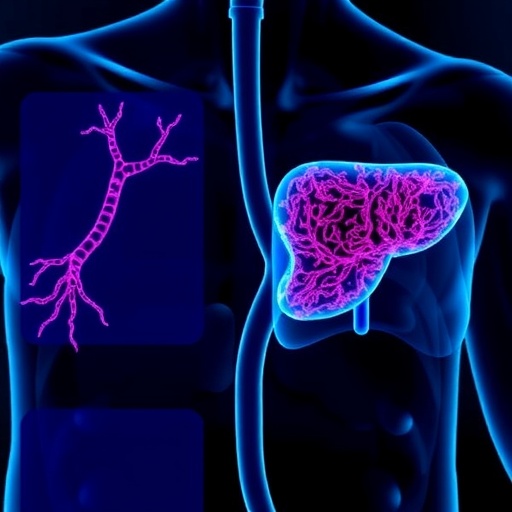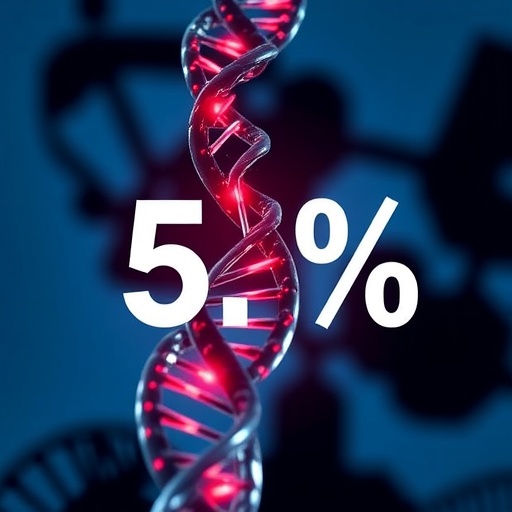In the relentless quest to improve diagnostic precision for complex brain malignancies, a groundbreaking study published in BMC Cancer unveils a promising frontier: plasma exosomal microRNAs (miRNAs) that could dramatically enhance the differentiation between primary central nervous system lymphoma (PCNSL) and glioblastoma multiforme (GBM). This innovative research addresses a long-standing challenge in neuro-oncology—the accurate and swift preoperative diagnosis of PCNSL, which is often confounded with GBM due to overlapping clinical and radiographic features.
Distinguishing PCNSL from GBM carries profound implications for treatment strategies and patient prognosis. Conventional diagnostic techniques, fraught with invasiveness and limited sensitivity, have left clinicians navigating murky waters. By harnessing the molecular cargo of plasma exosomes—tiny vesicles that ferry specific miRNAs reflective of tumor biology—researchers have pinpointed distinct miRNA signatures that differ markedly between PCNSL and GBM patients.
The study embarked on an extensive profiling of peripheral blood exosomal miRNAs, conducting next-generation sequencing on samples from both PCNSL and GBM cohorts. Remarkably, 67 miRNAs exhibited significant differential expression patterns, suggesting robust molecular disparities between these two malignancies that are otherwise challenging to delineate clinically. Such an expansive miRNA landscape provided the foundation for subsequent validation efforts.
Focusing on translational impact, the team selected ten miRNAs exhibiting the most pronounced differences for rigorous validation using reverse transcription quantitative PCR (RT-qPCR). This step involved 27 patients diagnosed with PCNSL and an equal number with GBM, ensuring statistical robustness and clinical relevance. The results illuminated four miRNAs—hsa-miR-148a-3p, hsa-let-7f-5p, hsa-miR-345-5p, and hsa-miR-4433b-5p—as significantly upregulated in PCNSL plasma exosomes compared to GBM, with compelling statistical significance (p-values ranging from 0.001 to 0.036).
The implications of these findings extend beyond mere biomarkers; they unveil potential mechanistic pathways underpinning disease pathology. Notably, a composite biomarker panel comprising hsa-miR-148a-3p, hsa-miR-345-5p, and hsa-miR-4433b-5p demonstrated superior diagnostic accuracy, achieving an area under the receiver operating characteristic (ROC) curve (AUC) of 0.791. This metric indicates a high potential for clinical application, where the integration of miRNA profiling may soon supplement conventional imaging and histopathology for enhanced decisiveness in diagnosis.
Delving further into molecular machinations, immunohistochemical analyses revealed a stark contrast in epidermal growth factor receptor (EGFR) expression between the two tumor types. PCNSL tissues displayed markedly lower EGFR levels than their GBM counterparts. Given EGFR’s pivotal role in promoting tumor growth and therapeutic resistance, this discovery offers a dual diagnostic and therapeutic vantage point.
At a cellular level, functional assays underscored the influence of miRNAs on EGFR expression. Using LN229 glioblastoma cells, the investigators demonstrated that overexpression of miR-148a-3p and miR-4433b-5p led to a significant downregulation of EGFR, suggesting a regulatory circuit wherein these miRNAs exert tumor-suppressive effects by modulating a critical oncogene. Moreover, luciferase reporter assays confirmed that miR-4433b-5p directly binds to the 3’ untranslated region of EGFR mRNA, suppressing its translation with high specificity and potency (p<0.001).
This intricate miRNA-EGFR interplay not only delineates divergent molecular pathways in PCNSL and GBM but also hints at novel therapeutic angles. By manipulating these miRNA regulators, future interventions might attenuate EGFR-driven tumor progression, presenting an avenue for targeted therapy in notoriously intractable glioblastomas.
While these revelations ignite excitement, the study cautiously acknowledges the necessity for validation in larger cohorts. The observed miRNA biomarkers, though promising, require replication across diverse populations and standardization protocols to transition from bench to bedside. Such rigorous validation will cement their role within diagnostic workflows and potentially guide personalized treatment regimens.
The research epitomizes the burgeoning field of liquid biopsy, wherein blood-derived analytes provide a non-invasive window into the molecular underpinnings of cancers. Compared to traditional tissue biopsies, plasma exosomal miRNAs offer dynamic, real-time insights with minimal patient burden, facilitating earlier diagnosis, monitoring of disease progression, and evaluation of therapeutic efficacy.
Moreover, this study reinforces the concept of exosomes as critical communicators within the tumor microenvironment, shuttling not only diagnostic markers but also modulators of tumor behavior. Decoding this “exosomal language” may unlock new biomolecular networks that govern tumorigenesis and metastasis.
The impact of these findings transcends academic circles, promising tangible benefits for patients grappling with central nervous system tumors. Accurate differentiation between PCNSL and GBM directly informs treatment decisions—chemotherapy regimens differ vastly between lymphomas and gliomas, and surgical strategies vary accordingly. Misdiagnosis can entail suboptimal therapy, increased morbidity, and diminished survival odds.
In conclusion, the identification of plasma exosomal hsa-miR-148a-3p, hsa-miR-345-5p, and hsa-miR-4433b-5p as biomarkers heralds a transformative step forward in neuro-oncology diagnostics. Their unique expression patterns, interplay with EGFR, and superior discriminatory power illuminate new diagnostic paradigms and therapeutic targets. As the scientific community advances, integrating such molecular tools into clinical practice could reshape patient management, ushering in an era of precision medicine tailored to the molecular fingerprints of intracranial tumors.
This pioneering research sets a captivating precedent, inspiring further exploration of exosomal miRNAs as liquid biopsy assets. Beyond PCNSL and GBM, similar approaches may unravel enigmatic signatures in other malignancies, fundamentally shifting workflows from invasive procedures toward minimally invasive molecular diagnostics. The fusion of cutting-edge sequencing technologies, rigorous validation, and functional analyses embodied in this study exemplifies the multidisciplinary synergy propelling modern oncology toward unprecedented horizons.
Subject of Research: Identification and validation of plasma exosomal microRNAs as novel biomarkers to differentiate primary central nervous system lymphoma (PCNSL) from glioblastoma multiforme (GBM), along with investigation of miRNA-mediated regulation of EGFR expression.
Article Title: Study of plasma exosomal miRNAs as novel biomarkers for differentiating primary central nervous system lymphoma and glioblastoma
Article References:
Lu, S., Xu, L., Lan, Y. et al. Study of plasma exosomal miRNAs as novel biomarkers for differentiating primary central nervous system lymphoma and glioblastoma. BMC Cancer 25, 1657 (2025). https://doi.org/10.1186/s12885-025-14933-z
Image Credits: Scienmag.com
DOI: https://doi.org/10.1186/s12885-025-14933-z
Tags: brain cancer biomarkerscentral nervous system lymphoma diagnosisglioblastoma multiforme differentiationmiRNA profiling techniquesmolecular signatures in oncologyneuro-oncology advancementsnext-generation sequencing in cancer researchnon-invasive cancer diagnosticspatient prognosis and treatment strategiesplasma exosomal microRNAsprecision medicine in brain cancertreatment implications for brain tumors





